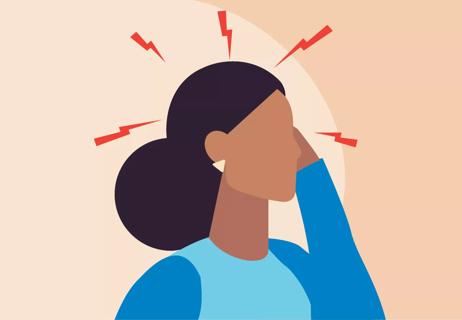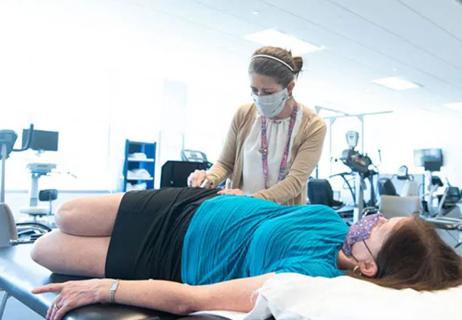Advertisement
Practical advice from a Q&A with two adolescent psychiatrists

Hooking up is the dominant model of courtship among traditional-age college students today. Is it a net positive or negative? In this Q&A, Cleveland Clinic child/adolescent psychiatrists Brandon DeLiberato, DO, fifth-year fellow, and Molly Wimbiscus, MD, Program Director, Children and Adolescent Psychiatry Fellowship Program, explore hookup culture and suggest ways clinicians can uncover associated problems while promoting healthy sexuality.
Advertisement
Cleveland Clinic is a non-profit academic medical center. Advertising on our site helps support our mission. We do not endorse non-Cleveland Clinic products or services. Policy
Dr. DeLiberato: Hooking up is defined as a casual sexual encounter or encounters that occur without any expectation of future commitment. This can involve multiple sexual encounters with one partner or with several different partners, but always without expectation of future commitment. Hooking up changes the order of traditional dating — people have sex first and then may or may not get to know each other — and it represents a shift to normalization of spontaneous sexual encounters outside of dating.
Dr. DeLiberato: Prevalence data in a widely cited 2002 study by Paul and Hayes showed that nearly 78 percent of college-age students had engaged in a hookup, and 30 percent of college-age students had engaged in a hookup involving intercourse. Hookups occur in other socioeconomic classes too; it’s just that the college population is easier to study. High school students engage in hookups as well.
Dr. DeLiberato: The same Paul and Hayes study showed that 94 percent of hookups involved intoxication with alcohol or drugs. Hookup behavior may be modeled after pornography, media or other peoples’ actions.
RELATED: Teen Sexual Development in the Digital Age
Dr. DeLiberato: Data are sparse and sometimes contradictory. Several studies show that college students perceive hookups as normal, harmless behavior. However, while both genders report more positive than negative emotions immediately after a hookup, women report more emotional ambivalence and attribute positive emotion to the hope that the encounter will lead to a relationship. Women tend to feel more regret post-hookup and report more psychological distress than men after such encounters.
Advertisement
A 2008 study by Eshbaugh and Gute showed that college women were more likely than college men to ruminate about a hookup and feel greater shame and self-doubt following the experience. Men, in contrast, felt more satisfied.
For some millennials, the superficial, uncommitted nature of a hookup is a kind of insurance policy to protect themselves from possible emotional or other difficulties involved in relationships. After being stung by a hookup partner who remarked “See you never” as he departed, one millennial put it this way in a recent New York Times essay: “There’s nothing particularly new about trying to avoid getting hurt. It’s just that my generation has turned this avoidance into a science, perfecting the separation of the physical from the emotional.”
Others see hooking up as an extension of the sexual revolution, representing freedom and a sense of control. My concern is that there’s more coercion and more male dominance in this system; women are being exploited and it’s an illusion of sexual expression. In her new book, Girls & Sex: Navigating the Complicated New Landscape, writer Peggy Orenstein notes that hooking up may promote objectification of women, that women are expected to imitate actions and actresses from pornography, and that it can prevent women from exploring their sexuality in a healthy way.
Dr. Wimbiscus: I don’t think there are specific signs, but hooking up can contribute to an adolescent’s distress. We can’t be sure unless we ask. We need to be aware that individuals’ courtship patterns and sexual lives vary tremendously.
Advertisement
Dr. DeLiberato: Generally, I recommend building a level of rapport by asking about peers, friends and hobbies: What do you and your friends do on weekends? Do you have a best friend at school? What are your friends doing to find partners? Is there anyone at school who you like more than a friend? The patient might answer, “Yeah, there’s somebody I’m talking to.” I would then ask, “What do you mean by talking to somebody?” Once you’ve established rapport, you can ask directly, “Have you had, or are you having, sex?”
After building rapport, clinicians can ask traditional sexual history questions and provide education, counseling, and potential treatment options or resources as necessary. It’s important to maintain a conversational style and avoid a checklist method of questioning. Sexual information can be easily overlooked, minimized or purposefully omitted by the patient if it’s not solicited in a careful way.
Much like in Lois Lowry’s novel, The Giver, clinicians act as receivers of memories, and it can be emotionally challenging to manage the information we obtain. It may help to practice interview questions with colleagues and process complicated or upsetting information with mentors.
Dr. Wimbiscus: Depending on the patient’s age and psychological or emotional maturity, I like to lay it out there and start by saying, “I’m going to ask you a bunch of questions about sex.”
We’re in a privileged position as neutral clinicians to create a safe place where kids can ask questions and we can provide reassurance that we are all sexual creatures. I can’t tell you how many kids express a sense of relief when they can describe what they are doing and not feel judged.
Advertisement
Dr. DeLiberato: Hooking up is the norm for many adolescents and young adults. It may not be inconsequential, especially for women. However, we should avoid making judgments, as this is what’s happening in today’s society. For clinicians, it’s about developing appropriate language and questions, and building rapport with patients to make sure problems are not brewing.
Dr. Wimbiscus: I encourage primary care providers and others to make sexuality a normal topic of discussion with adolescent and young adult patients. The level of comfort in discussing the topic varies across generations and cultures. As clinicians, educators, parents and mentors, we need to empower kids to make healthy sexual decisions and not struggle with the varied stigma of sexual activity.
One of the most useful tools for reducing untoward sexual outcomes for teens is knowledge about and access to condoms. I try to be clear and direct: “Do not have sexual intercourse with anything that does not have a condom on it,” or “If you’re going to have sex, put a condom on it.”
National Guidelines Task Force. Guidelines for Comprehensive Sexuality Education: Kindergarten Through 12th Grade. 3rd ed. Washington, D.C.: Sexuality Information and Education Council of the United States; 2004.
Advertisement
Advertisement

Q&A with Brain Trauma Foundation guideline architect Gregory Hawryluk, MD, PhD

Q&A with newly arrived autoimmune neurology specialist Amy Kunchok, MD

A neurocritical care specialist shares what’s spurring growth of this new evaluation approach

Focused ultrasound offers a newer alternative to deep brain stimulation

Prehabilitation can help improve outcomes after spine surgery

Get ready for central vein sign and optical coherence tomography

How these new drugs fit into practice two years out from their first approvals

A conversation on the state of physiatry with the AAPM&R’s Vice President